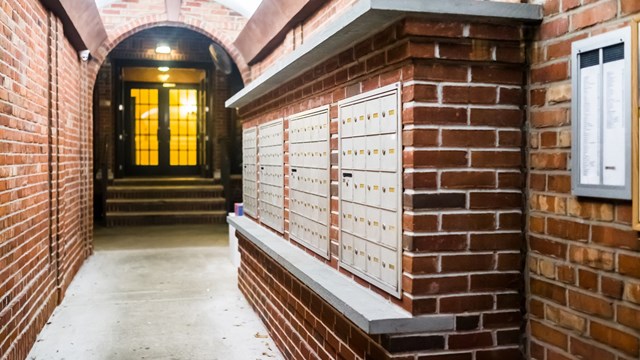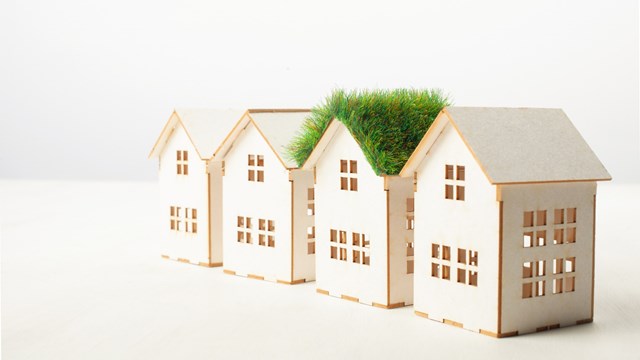
It’s not that your lobby looks bad. It’s just that the mirrored light fixtures and orange trim that seemed so stylish in the (original) days of Abba and flared slacks feels rather dated now. A renovation appears inevitable. How should your board plan for the big overhaul? It doesn’t have to be a traumatic process. With the right amount of planning, renovations can run quite smoothly with minimal upheaval and an undeniably attractive end result.
Answering the Big Questions
Joel M. Ergas, FASID, principal of Forbes-Ergas Design Associates in Manhattan, believes boards must look first at the big picture and worry about the details later. The first things to consider are "Why are we even thinking about doing this and what are we trying to accomplish?"
For many buildings, it’s as simple as wanting to update a tired look. Bob Stella sits on the capital improvements committee for his 600-unit co-op and condo hybrid. "Our building was a luxury building when it was originally designed more than 30 years ago," he says. After a half dozen superintendents and years of superficial changes, "things just didn’t look coordinated. Everything was starting to look very old and tired. The bare bones were there. We just wanted to bring back the original luxurious settings and enhance value for our shareholders."
Enhancing value can be a major plus when it comes to deciding whether or not to invest in renovation. Boards will know it’s time to make a change when "brokers tell you (the building’s) not up to par with the market," Ergas says. Renovating makes good dollar-sense. "There’s a decided impact on people’s investments when appearance and standards come up." Ergas encourages his clients to think of the process as "investing, not spending." If the renovation is done correctly and with an eye on the bottom line, the money invested will be earned back later in increased property value.
Pamela Brooks, a client of Ergas’ and chair of the design committee for a 359-unit co-op currently undergoing renovation, already sees improvement for those who are trying to sell their units. Ergas created a mock-up floor so residents could get a renovation preview. "When people are showing their apartments, the first thing they do is take (potential buyers) to that floor," Brooks says. "It’s a wonderful selling tool."
Getting Started
Once the decision to go ahead has been made, the board must select a steering committee to spearhead the renovation efforts. A small group usually works best, comprised of individuals who are all equally committed to the task at hand. "You don’t want one person pushing through their idea simply because they want to sell their apartment," Ergas says.
Michael Love, FASID, principal and owner of Interior Options in Manhattan, says that one of the pitfalls of renovation is having someone on the committee "who’s so opinionated that no one can get anything done." On a project that may take months or years, team work becomes vital to success. Committee members need to consider that they are doing this for the building and what might appeal to them aesthetically in their own apartments might not be relevant to what will look good or work well logistically for the building.
Love believes it helps to have a mix of residents and board members on the committee. "A tenant might have good design skills," she says. "And it makes tenants feel more a part of the process."
Once in place, the committee’s first task should be to draw up a "wish list," Ergas says, and decide not only what they need to have done, but what residents might want to have done. "Don’t worry if the list is too long or seems unattainable," he says. "You can always prioritize. And some things might not be attainable in one year, but maybe in five." Whatever the length, it’s imperative simply to have a list. "If you don’t know where you’re going, you’ll wind up nowhere."
Deciding on the scale of the project is vital as well. A building’s appeal might increase ten-fold with a simple lobby renovation. But now also might be the time to consider an exterior face-lift. A rooftop terrace or ground-level landscaping, a new canopy–it all can add to what Ergas and other design professionals call increased "curb appeal."
Dollars and Sense
The most successful renovation projects have all started with a firm grasp on numbers. Many boards use funds they’ve been saving and cultivating for years.
Brooks’ building has commercial tenants, providing management with additional dollars to invest. "The building has been financially prudent," she says. No assessment was levied on residents when it came time for renovations.
The same is true for Stella’s building. "Budget was one of the first things we had to anticipate," he says. "We had to have adequate capital set aside to handle these renovations." They began taking action on the question several years before renovations began. "We took estimates of costs, rolled them forward and projected," Stella says. The building had to raise maintenance fees for a couple of years prior to undertaking the project, but again, no assessments were required. The board then worked from that surplus as well as dollars from the operating fund.
Careful budgeting includes future considerations, too. "After it’s all done, you have to protect this investment," Ergas says. "You have to be prepared to maintain it."
Help is on the Way
All of these decisions might seem overwhelming, but help is just a phone call or two away. A professional, experienced designer can help with any and all details. Once a board has a solid idea of what they can spend, a designer will help mold specific design choices to that figure. "A good designer should be able to get the most impact for the dollar," Love says. "And maybe a few extras, too."
Choosing the right designer may be the most important decision in the entire renovation process. Property managers or other boards can provide helpful advice when it comes to creating a candidate pool, but it’s the committee’s responsibility to interview each designer closely. Both Ergas and Love recommend that a board talk to several designers. And talking is key to a successful designer-board relationship. "If I can’t be honest with a board, I don’t want to work with them," Love says.
It’s a relationship built on trust. "We took some time to interview firms," Brooks says. "What was important was comfort level. You have to be able to call them and talk to them. You’re going to be working with them for a long time."
Check references, look at portfolios, talk to other clients. As with budget, research is vital to choosing the right designer. "You have to have faith, but faith based on research," Ergas says.
What Now?
The ink has dried on the designer’s contract. Now it’s time for the fun part. With your wish list and budget in mind, the designer should draw up several renovation options. The basics will be the same in each–there are only so many places you can put a doorman’s desk–but subtle nuances will vary, including color, wall paper, molding and other details.
Stella’s committee used these mock-ups to enlist the support of residents. "We gave residents three choices and a chance to choose different color schemes," he says. "We posted all this in the building lobby and did a survey. When you have 600 people, you’re never going to get agreement, but we took the comments of all who responded and tried to incorporate them."
Residents should be part of the equation, whether they’re represented on the renovation committee, polled as in Stella’s case or provided with a preview as was done in Brooks’ building. "It gave tenants an opportunity to see what they would get and we got good, constructive criticism from residents," she says. The mock-up also allowed the designer to smooth out potential problems before they were repeated on each floor.
The Final Stretch
With designs selected, it’s time for the work crews to get down to business. Hiring contractors can be done through the designer or with the help of the property manager. As with designer selection, bidding is vital. "Boards need a paper trail of competitive bidding," advises Ergas.
Designers will help break large-scale renovations into phases. Elevators may be done one month, a rooftop terrace may take a summer or a health club could occupy a few winter months. Whatever the formula, it’s in the best interests of all involved to group the projects geographically. "If they’re going to do it in stages, do all the floors at once and then the lobby," Love says. "You can’t do half the floors because then some residents feel like second-place citizens." Plus, grouping the projects together will provide more impact for the dollar and assure that all areas age collectively–one half of the hallway won’t begin to age out of sync with the other half.
The project may feel endless, but once the sawdust starts flying, the board is usually in good shape. It’s in the hands of the contractors now. The planning has been done, the budget is in place (with some emergency dollars tucked away just in case), the colors have been chosen. Now watch the metamorphosis.






Leave a Comment